By David Jen
The London Borough of Tower Hamlets has granted planning permission for a movable bascule span pedestrian bridge across the South Dock waterway, which connects to the River Thames and separates the burgeoning areas of Canary Wharf and Isle of Dogs.
A peninsula in the River Thames, the Canary Wharf and Isle of Dogs areas benefited greatly in the 1980s from revitalization projects aimed at social, economic, and environmental issues. Canary Wharf has since become a financial center for the United Kingdom.
Current area development, such as the anticipated South Quay Plaza skyscraper residences and the newly opened Canary Wharf Underground Station, promises to invigorate the area further.
Designed by studios Knight Architects, Arcadis, and KGAL, the South Dock Bridge will span 70 m in a north-south direction with a width that varies between 7.8 m and 15.4 m wide. It will follow the alignment of Upper Bank Street and help alleviate traffic on the existing South Quay Footbridge to the west.
“Space in the area where the bridge is located is precious, being in the heart of London, so (any) readjustments in mooring at the quays or recreational use in the water body needed careful discussion,” explains Hector Beade-Pereda, the design director of Knight Architects
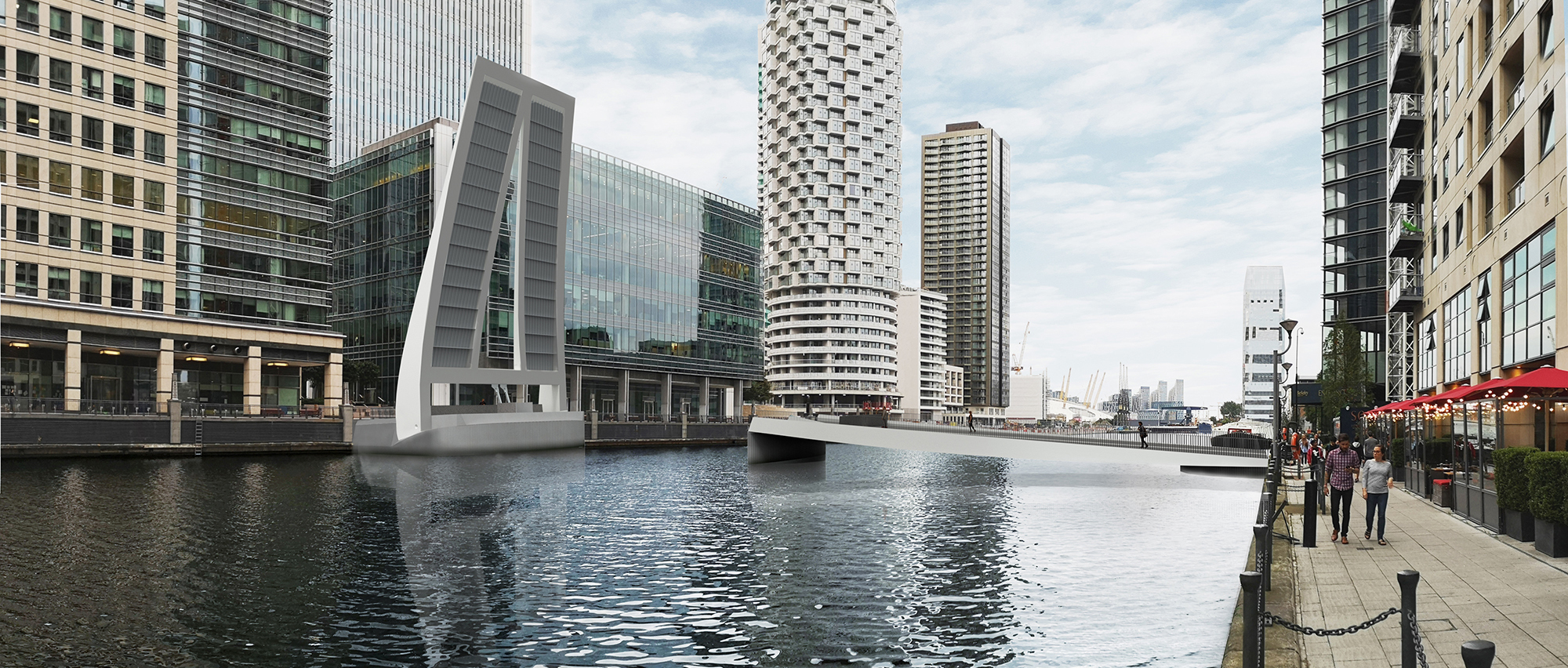
“Although (the waterway) is linked to the Thames, which is tidal, the access to the dock takes place through a lock that controls the water level,” says Beade-Pereda. This means that the watercourse spanned by the bridge is a dock with a constant water level, he says.
The two-span, variable-depth steel beam design will rest on two abutments and a central pier, all of which will stand independently in the water to avoid load transfer to the existing quays.
Smaller marine vessels may travel under the south span via a permanent 15 m wide channel with a 3 m clearance above the full impounded water level of the waterway, which is just 4 cm higher than the average water level. Larger vessels will travel through a 25 m wide channel without height restriction, courtesy of the bridge’s bascule north span.
A hidden counterweight in the north abutment will minimize the energy required to open and close the bridge.
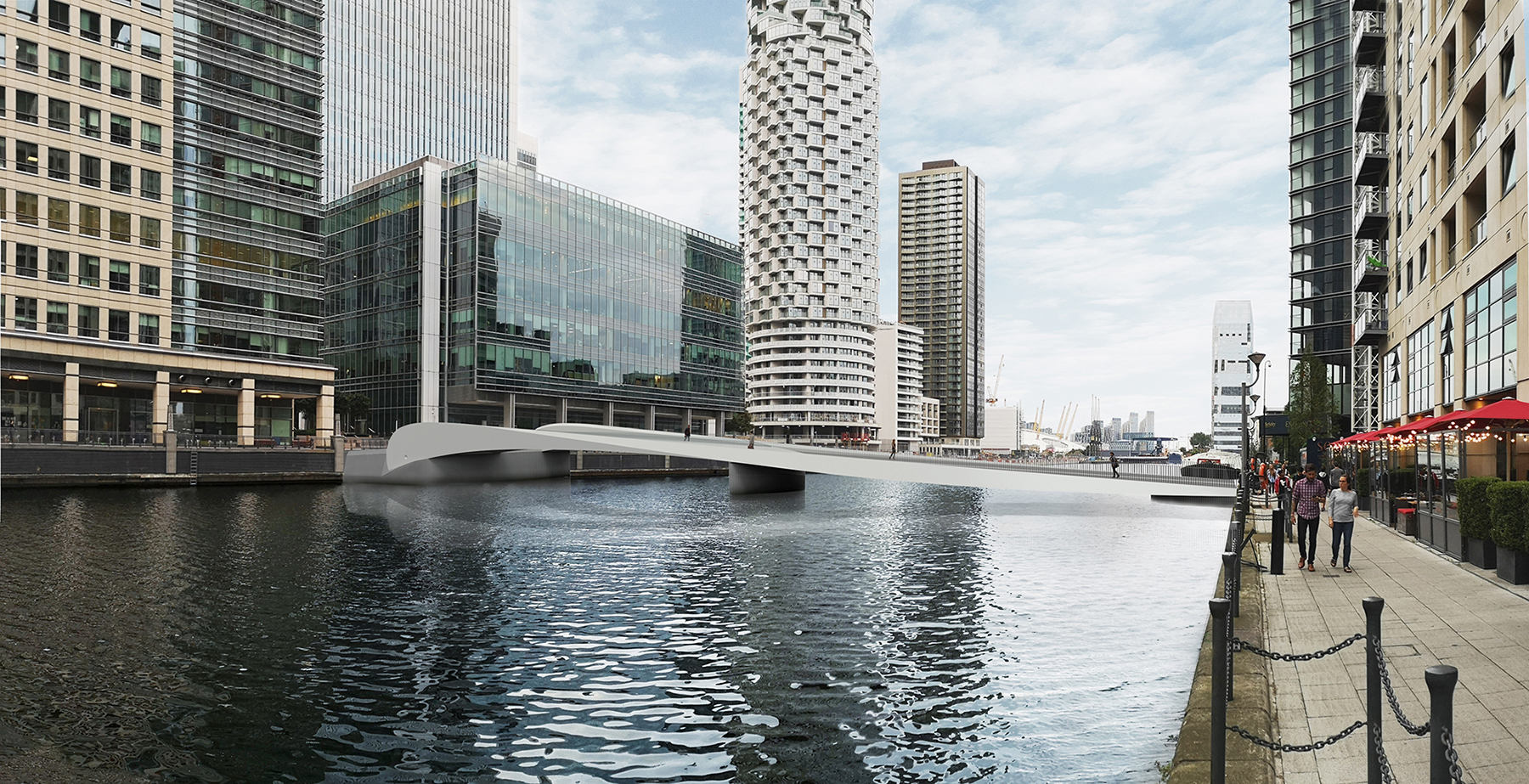
In response to design constraints around a preexisting emergency staircase on the north quay, a distinctive triangular void in the bridge’s northern span will guide pedestrian traffic leaving the bridge around either end of the quay staircase. This void will also add transparency to the structure when the bridge is opened, offering a glimpse of sky views between the existing buildings.
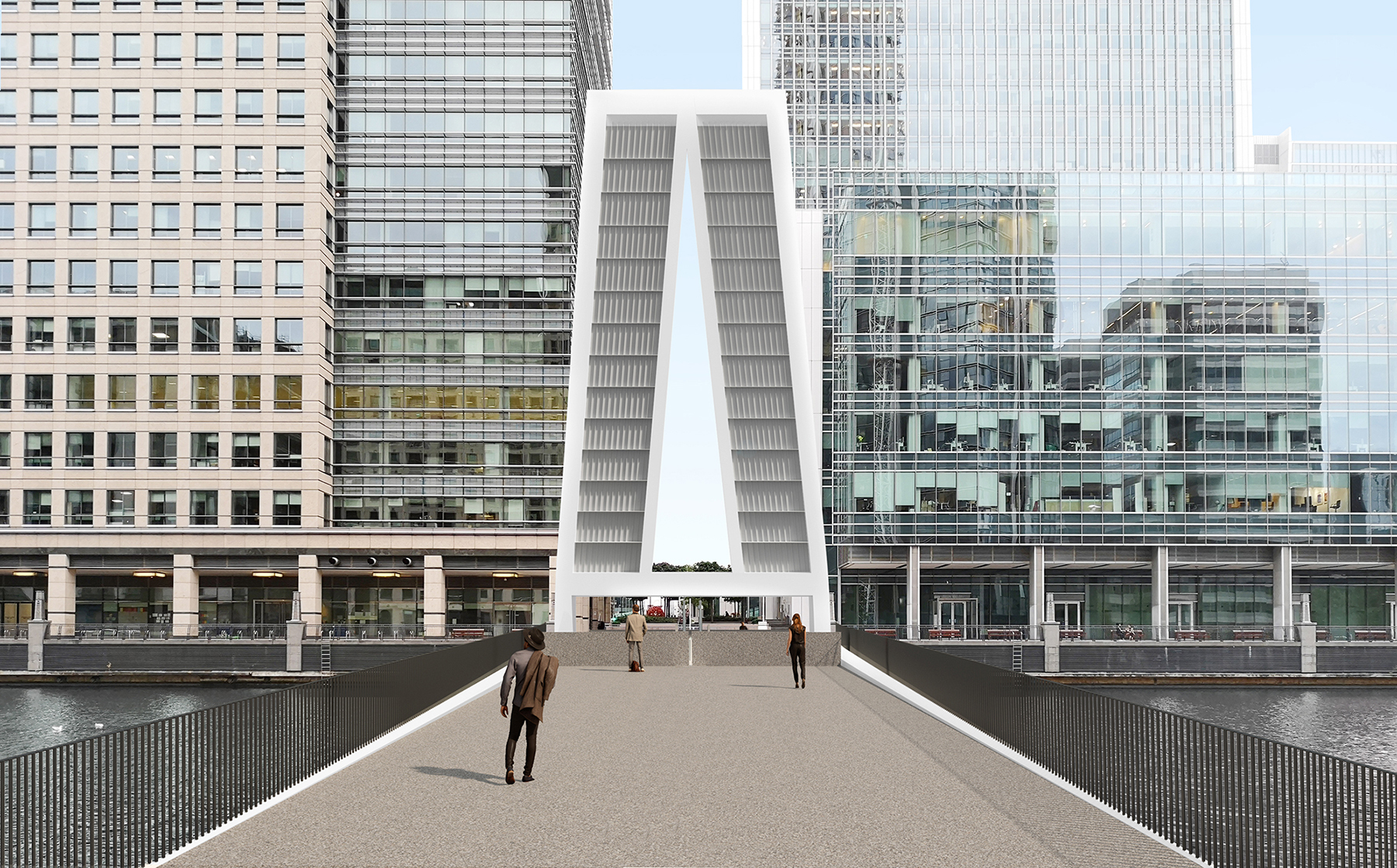
For the overall design of the bridge, the team chose “a compact visual language that made it unobtrusive when perceived from afar, but crisply and beautifully sculpted and detailed in closer inspection,” according to written material from Knight Architects.
Beade-Pereda expects pedestrian traffic in the area to grow by 30% in the next 10 years with the construction of the bridge, reaching around 50,000 people per day with a peak of 6,000 per hour.
“The bridge is expected to be the second-busiest pedestrian bridge in London when built,” says Beade-Pereda.
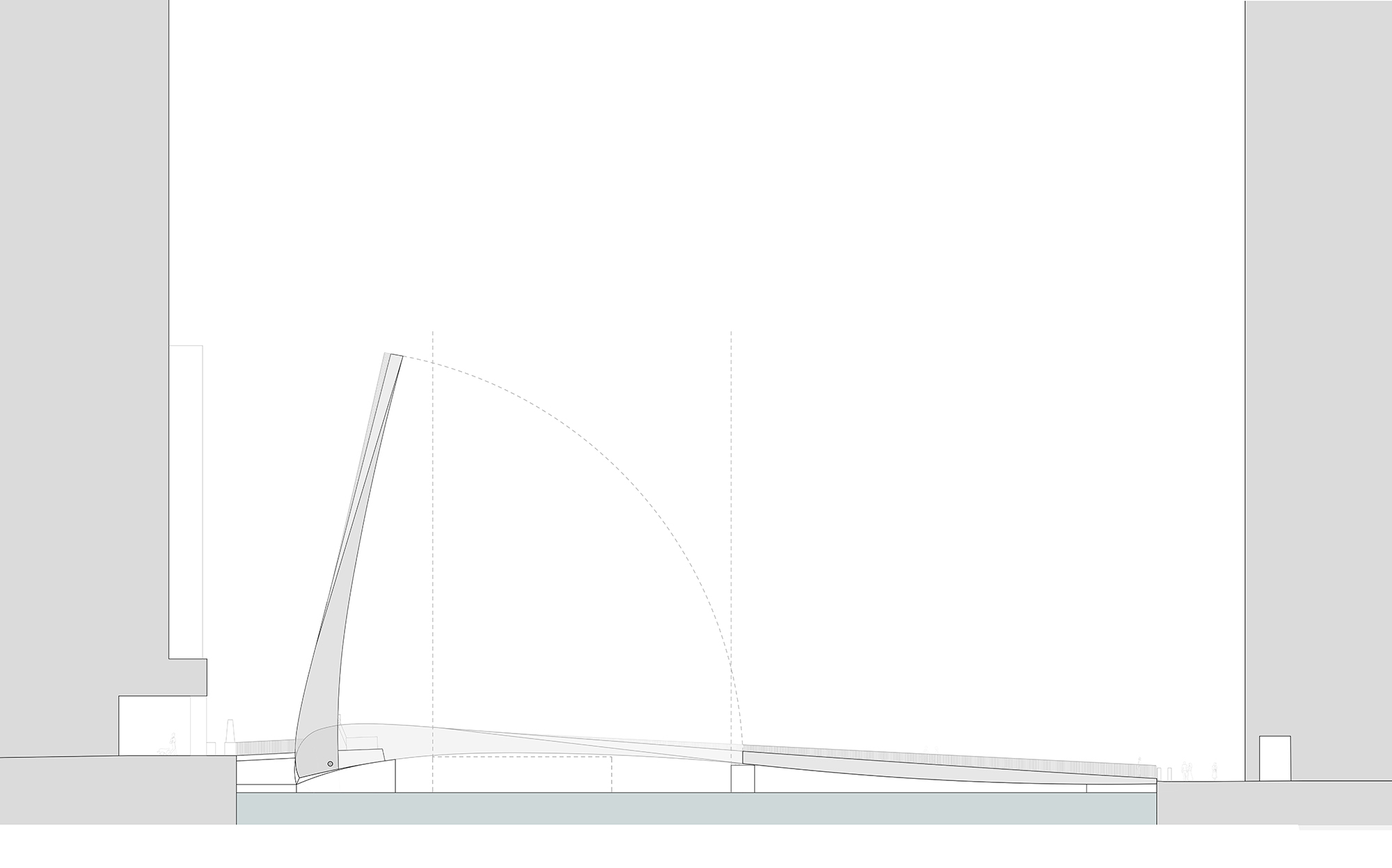
Planning for the bridge began in 2015, but varied stakeholders and site constraints have introduced complexities over the years.
While Tower Hamlets serves as the project’s client, funding for the project’s 20 million pound ($24 million) budget has drawn from both public and private sources. The bridge’s Canary Wharf landing is privately owned.
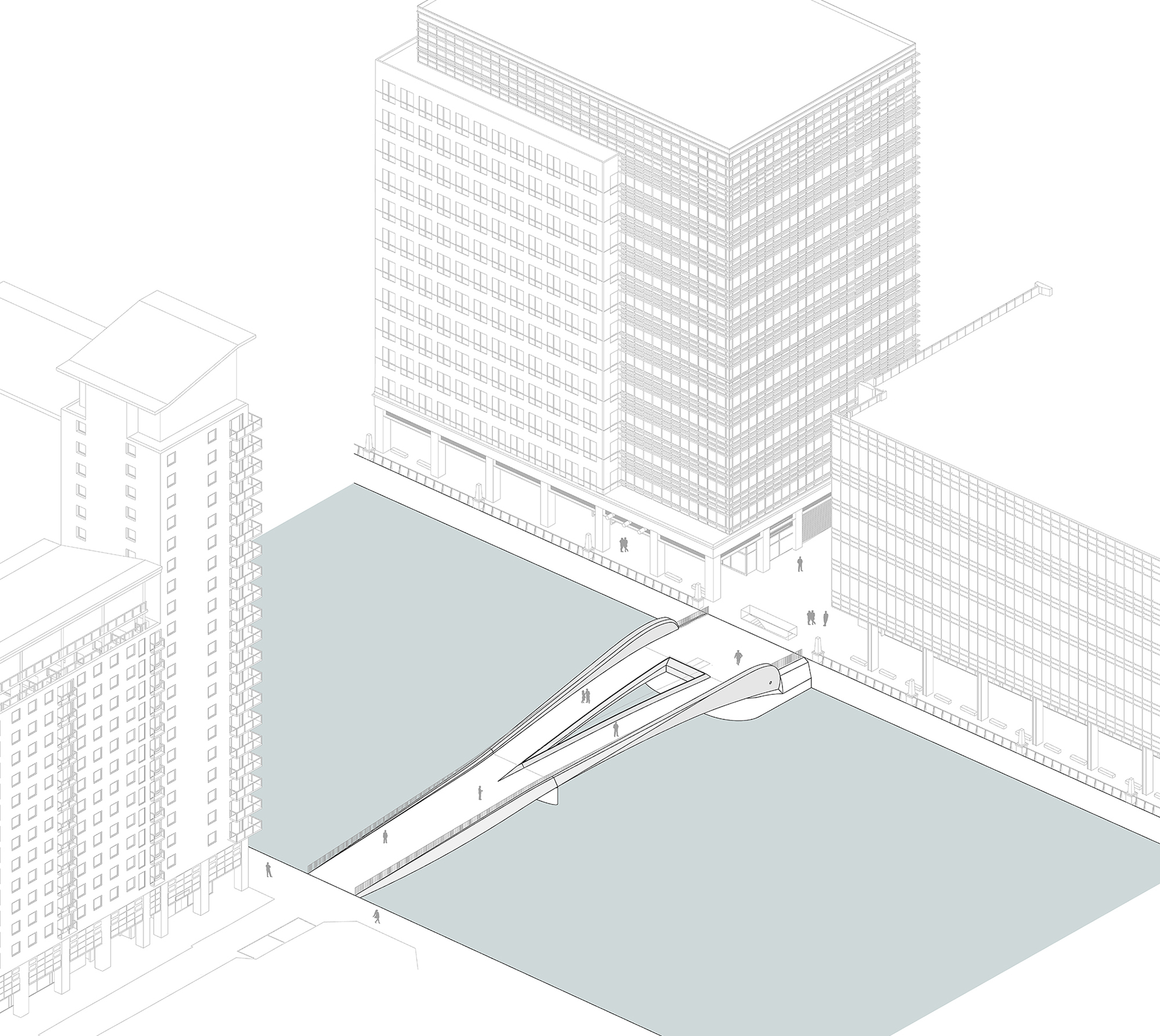
Tower Hamlets expects to complete the tender process and begin construction this year, with the bridge opening in 2024.
This article first appeared in Civil Engineering Online.



